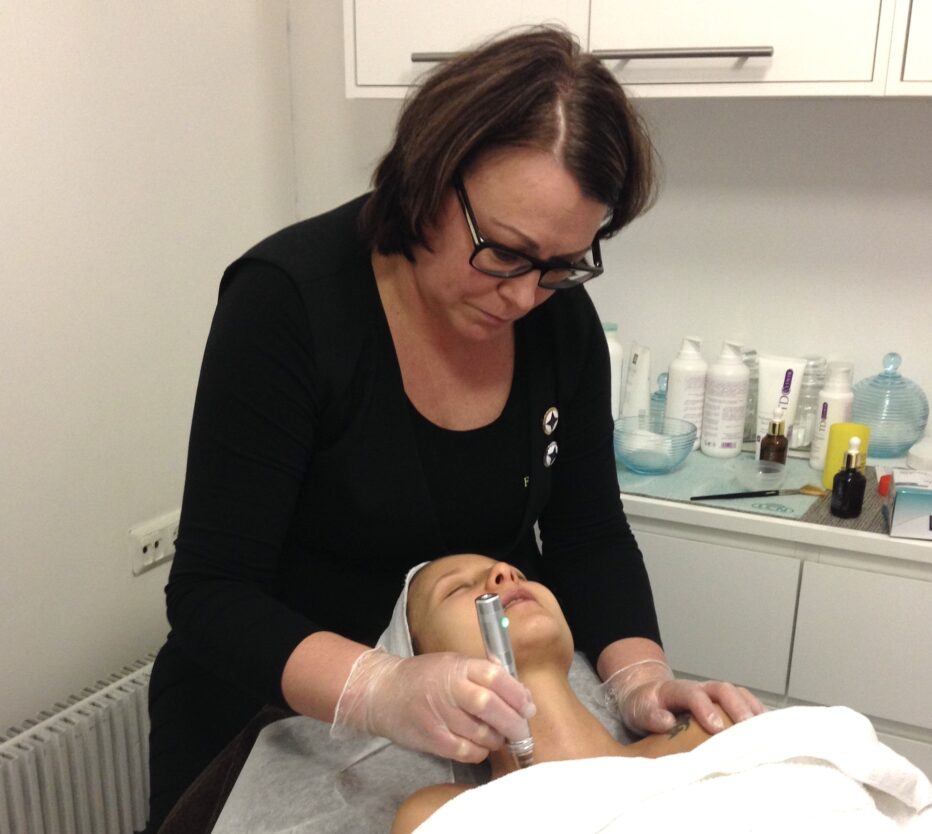YRITTÄJÄ, tule mukaan omiesi pariin! Liity Yrittäjiin.

YEL lifeline for entrepreneur after serious accident
Natalia Piispa, a beauty salon owner from Salo, had a serious car accident in 2017. She subsequently realized how important raising one’s YEL income is.
The single-person business owner Natalia Piispa has not for a moment regretted her decision at one point to raise her YEL income to €25,000. She was in a serious car accident in 2017. The Kauppalehti newspaper was the first to tell Piispa’s story.
“I was on sick leave for a month with my arm in a cast. I couldn’t work at all and had to cancel and postpone all my clients’ appointments. The accident was quite a shock. I’d never been off work for so long.”
“Thank God I had the safety net of my YEL income.”
Natalia Piispa
Thanks to her sufficient YEL income, Piispa received social welfare payments of around €2,300 over 30 days, or around €78 a day gross. By that time, her YEL income had risen to €27,750 due to index-linked increases.
“Thank God I had the safety net of my YEL income.”
Piispa pays €600 in YEL insurance contributions monthly.
“I’ll never reduce my YEL income ever again, that much is certain.”
Salary coefficient increases YEL income
When Piispa started her business in 2009, she thought the same way as many new entrepreneurs.
“I paid YEL insurance contributions according to a YEL income of €13,000.” Then my accountant pointed out that my YEL income is also my social security, because a business owner has no other option. When I was young, I never thought anything would happen to me or that I would fall seriously ill.”
Raising the YEL income meant significantly higher monthly payments, but the turnover of Piispa’s business meant she could afford it.
After about two years of running her business, Piispa raised her YEL income to €25,000. This was 2010.
“I began to think and I decided to do as my accountant had advised,” Piispa remembers.
Raising the YEL income meant significantly higher monthly payments, but the turnover of Piispa’s business meant she could afford it.
Piispa, who is a self-employed sole trader, has since seen her YEL income rise due to the statutory salary coefficient. An index-linked rise affects YEL incomes on the 1st of January. If an entrepreneur’s YEL income was €30,000 last year, from the start of this year it would be €30,737. The purpose of the index-linked rise is to keep the business owner’s YEL income in line with general salary and price development.
As of this year, YEL income must be at least €13,573 to entitle the business owner to unemployment security. Above this level, the business owner is eligible for basic unemployment benefit from Kela and he or she may join the Entrepreneur Fund unemployment fund.
Wake-up call at the insurer’s office
The real YEL wake-up call for Piispa was her visit to her insurer’s office after her accident.
“An agent showed me a table which displayed visually what my social security level was at that time and how much sick pay I would get. It was then that I realized my social security was really at a good level and that I was getting enough money net. If I had paid the minimum YEL payments, I wouldn’t have got much at all and would probably not have been able to pay my business expenses, such as rent, which I had to pay even though I was incapable of working.”
Since then, Piispa has wanted to enlighten young business owners, in particular. At the same time, she understands that far from everyone is in a position to make payments in accordance with a €20,000 YEL income.
“If the business and its profits are small, then of course the business owner should pay in line with their situation. However, if your business is on a reasonably good foundation, like mine, you should invest in your YEL income. I’ve realized that a lot of people have misconceptions about the YEL system.”
YEL reform will not necessarily affect YEL income
The YEL system hit the headlines in the spring because of the YEL reform going through Parliament. Many business owners have said that they are afraid that their businesses will be put at risk by excessively high YEL incomes. We have reported on the content of the YEL reform in several places, such as here.
Piispa, who is active in Women Entrepreneurs of Finland, has studied the basis for the reform. She wants to point out that the reform will not necessarily change anything.
“People who pay the minimum YEL payments have nothing to worry about, because their YEL income will not be rising. However, if a business owner deliberately pays too little, their payments will rise. I think that all business owners should be equal, including on the basis of YEL income. I think it’s a shame that some people don’t think about their YEL income at all. People are quick to criticize the system, but then they complain and are sorry when something happens, and their social security isn’t enough.”
Piispa stresses that YEL is above all insurance which determines the level of a person’s entire social security, such as following illness, an accident or unemployment. She has sought to secure her business and life through other insurance policies, such as an entrepreneur’s accident insurance policy, which covers both work and leisure time.
“On top of that, I have extensive business interruption insurance, which gives additional protection in the event of a serious illness. After my accident, I received a one-off payment from my accident insurance policy. The insurance covered the working time I had lost.”
Piispa pays approximately €2,000 annually in premiums for her other insurance policies.

Pauli Reinikainen
pauli.reinikainen@yrittajat.fi